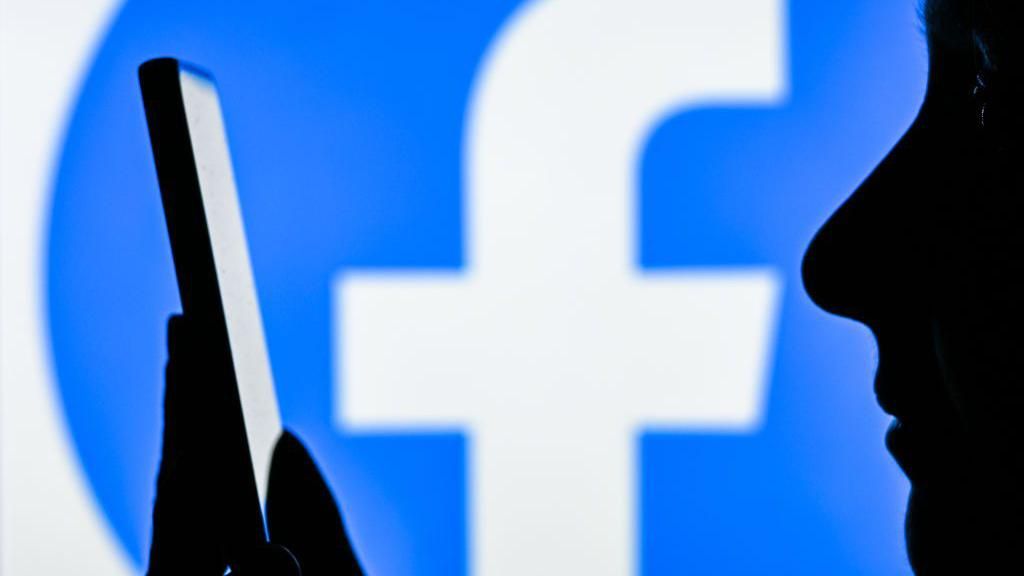Business
Canada added 337,000 jobs last month, twice what was expected – CBC News
Canada’s job market bounced back in a big way in February, shaking off the losses brought about by the Omicron variant with a hiring surge that was enough to push the unemployment rate below where it was before the pandemic started.
Statistics Canada reported Friday that Canada added 337,000 new jobs in February, pushing the jobless rate down to 5.5 per cent.
That’s lower than the 5.7 per cent jobless rate seen in February 2020, before the advent of COVID-19. It’s also just shy of the all-time record low of 5.4 per cent, reached in May 2019.
A wave of lockdowns aimed at slowing the spread of the Omicron variant resulted in significant job losses in January, but February’s surge was more than enough to offset that.
WATCH | How many jobs did Omicron cost Canada’s economy:
While Canada lost 200,000 jobs in January because of Omicron, economists say the future should be looking brighter as soon as the pandemic relents, Alison Northcott reports. 2:01
Sectors that have been hardest hit by COVID rebounded, with the food and accommodation sector adding 114,000 new jobs.
“As Canadians ventured out of their homes again in February, businesses in accommodation and food services and information, culture and recreation were scrambling to rehire workers,” said economist Royce Mendes with Desjardins.
There were signs of recovery throughout the numbers. The total number of hours worked surged by 3.6 per cent in February, enough to finally put that figure above where it was before the pandemic.
Business
Tesla Promises Cheap EVs by 2025 | OilPrice.com – OilPrice.com


Tesla has promised to start selling cheaper models next year, days after a Reuters report revealed that the company had shelved its plans for an all-new Tesla that would cost only $25,000.
The news that Tesla was scrapping the Model 2 came amid a drop in sales and profits, and a decision to slash a tenth of the company’s global workforce. Reuters also noted increased competition from Chinese EV makers.
Tesla’s deliveries slumped in the first quarter for the first annual drop since the start of the pandemic in 2020, missing analyst forecasts by a mile in a sign that even price cuts haven’t been able to stave off an increasingly heated competition on the EV market.
Profits dropped by 50%, disappointing investors and leading to a slump in the company’s share prices, which made any good news urgently needed. Tesla delivered: it said it would bring forward the date for the release of new, lower-cost models. These would be produced on its existing platform and rolled out in the second half of 2025, per the BBC.
Reuters cited the company as warning that this change of plans could “result in achieving less cost reduction than previously expected,” however. This suggests the price tag of the new models is unlikely to be as small as the $25,000 promised for the Model 2.
The decision is based on a substantially reduced risk appetite in Tesla’s management, likely affected by the recent financial results and the intensifying competition with Chinese EV makers. Shelving the Model 2 and opting instead for cars to be produced on existing manufacturing lines is the safer move in these “uncertain times”, per the company.
Tesla is also cutting prices, as many other EV makers are doing amid a palpable decline in sales in key markets such as Europe, where the phaseout of subsidies has hit demand for EVs seriously. The cut is of about $2,000 on all models that Tesla currently sells.
By Charles Kennedy for Oilprice.com
More Top Reads From Oilprice.com:
Business
Why the Bank of Canada decided to hold interest rates in April – Financial Post
Article content
Divisions within the Bank of Canada over the timing of a much-anticipated cut to its key overnight interest rate stem from concerns of some members of the central bank’s governing council that progress on taming inflation could stall in the face of stronger domestic demand — or even pick up again in the event of “new surprises.”
“Some members emphasized that, with the economy performing well, the risk had diminished that restrictive monetary policy would slow the economy more than necessary to return inflation to target,” according to a summary of deliberations for the April 10 rate decision that were published Wednesday. “They felt more reassurance was needed to reduce the risk that the downward progress on core inflation would stall, and to avoid jeopardizing the progress made thus far.”
Article content
Others argued that there were additional risks from keeping monetary policy too tight in light of progress already made to tame inflation, which had come down “significantly” across most goods and services.
Some pointed out that the distribution of inflation rates across components of the consumer price index had approached normal, despite outsized price increases and decreases in certain components.
“Coupled with indicators that the economy was in excess supply and with a base case projection showing the output gap starting to close only next year, they felt there was a risk of keeping monetary policy more restrictive than needed.”
In the end, though, the central bankers agreed to hold the rate at five per cent because inflation remained too high and there were still upside risks to the outlook, albeit “less acute” than in the past couple of years.
Despite the “diversity of views” about when conditions will warrant cutting the interest rate, central bank officials agreed that monetary policy easing would probably be gradual, given risks to the outlook and the slow path for returning inflation to target, according to the summary of deliberations.
Article content
They considered a number of potential risks to the outlook for economic growth and inflation, including housing and immigration, according to summary of deliberations.
The central bankers discussed the risk that housing market activity could accelerate and further boost shelter prices and acknowledged that easing monetary policy could increase the likelihood of this risk materializing. They concluded that their focus on measures such as CPI-trim, which strips out extreme movements in price changes, allowed them to effectively look through mortgage interest costs while capturing other shelter prices such as rent that are more reflective of supply and demand in housing.
Recommended from Editorial
They also agreed to keep a close eye on immigration in the coming quarters due to uncertainty around recent announcements by the federal government.
“The projection incorporated continued strong population growth in the first half of 2024 followed by much softer growth, in line with the federal government’s target for reducing the share of non-permanent residents,” the summary said. “But details of how these plans will be implemented had not been announced. Governing council recognized that there was some uncertainty about future population growth and agreed it would be important to update the population forecast each quarter.”
• Email: bshecter@nationalpost.com
Bookmark our website and support our journalism: Don’t miss the business news you need to know — add financialpost.com to your bookmarks and sign up for our newsletters here.
Share this article in your social network
Business
Meta shares sink after it reveals spending plans – BBC.com


Shares in US tech giant Meta have sunk in US after-hours trading despite better-than-expected earnings.
The Facebook and Instagram owner said expenses would be higher this year as it spends heavily on artificial intelligence (AI).
Its shares fell more than 15% after it said it expected to spend billions of dollars more than it had previously predicted in 2024.
Meta has been updating its ad-buying products with AI tools to boost earnings growth.
It has also been introducing more AI features on its social media platforms such as chat assistants.
The firm said it now expected to spend between $35bn and $40bn, (£28bn-32bn) in 2024, up from an earlier prediction of $30-$37bn.
Its shares fell despite it beating expectations on its earnings.
First quarter revenue rose 27% to $36.46bn, while analysts had expected earnings of $36.16bn.
Sophie Lund-Yates, lead equity analyst at Hargreaves Lansdown, said its spending plans were “aggressive”.
She said Meta’s “substantial investment” in AI has helped it get people to spend time on its platforms, so advertisers are willing to spend more money “in a time when digital advertising uncertainty remains rife”.
More than 50 countries are due to have elections this year, she said, “which hugely increases uncertainty” and can spook advertisers.
She added that Meta’s “fortunes are probably also being bolstered by TikTok’s uncertain future in the US”.
Meta’s rival has said it will fight an “unconstitutional” law that could result in TikTok being sold or banned in the US.
President Biden has signed into law a bill which gives the social media platform’s Chinese owner, ByteDance, nine months to sell off the app or it will be blocked in the US.
Ms Lund-Yates said that “looking further ahead, the biggest risk [for Meta] remains regulatory”.
Last year, Meta was fined €1.2bn (£1bn) by Ireland’s data authorities for mishandling people’s data when transferring it between Europe and the US.
And in February of this year, Meta chief executive Mark Zuckerberg faced blistering criticism from US lawmakers and was pushed to apologise to families of victims of child sexual exploitation.
Ms Lund-Yates added that the firm has “more than enough resources to throw at legal challenges, but that doesn’t rule out the risks of ups and downs in market sentiment”.
-



 Politics24 hours ago
Politics24 hours agoOpinion: Fear the politicization of pensions, no matter the politician
-



 Politics23 hours ago
Politics23 hours agoPecker’s Trump Trial Testimony Is a Lesson in Power Politics
-



 Science23 hours ago
Science23 hours agoNASA Celebrates As 1977’s Voyager 1 Phones Home At Last
-
Media16 hours ago
B.C. online harms bill on hold after deal with social media firms
-
Media22 hours ago
B.C. puts online harms bill on hold after agreement with social media companies
-
Business22 hours ago
Oil Firms Doubtful Trans Mountain Pipeline Will Start Full Service by May 1st
-
Media21 hours ago
Trump poised to clinch US$1.3-billion social media company stock award
-
Real eState17 hours ago
Montreal tenant forced to pay his landlord’s taxes offers advice to other renters










